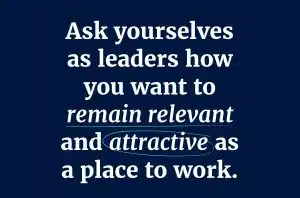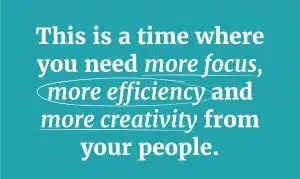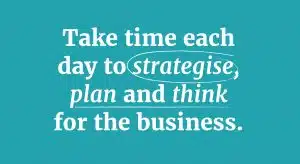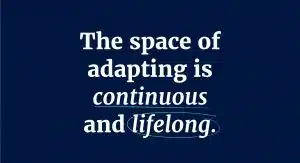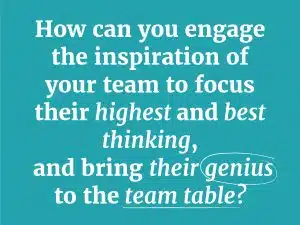How Can Leaders Support Post COVID Workplace Transitions?
How can we as leaders help our people transition back to the workplace in a way that satisfies their needs AND delivers on business imperatives?
During the past 12 months we have all learned something about ourselves and the way we want to work.
Some of us were afforded the privilege of retaining full employment and many of us were offered the chance to undertake our roles from home. Others managed transitions in Operations, balancing shifts and staff loads and many of us were asked to ‘pick up’ unassigned work, perhaps that of colleagues who were moved on. For those of us who were moved on, we were required to rethink our entire game – not just work, but life.
As leaders, we might have been called to be more patient, more understanding, more communicative, more bold, more strategic, more (fill in your world), and perhaps you might have been asked to stretch out of your comfort zone to do so?
As we prepare this paper, JobKeeper comes to a close in Australia. In our view, this was an incredible piece of Policy that has helped many businesses ‘make it work’ by supporting organisations to support staff. We rise to a new reality in April. This new reality is one we get to shape and invent.
During 2020, as coaches and transformational agents, we walked these ‘COVID’ steps with literally hundreds of leaders from more than 30 organisations and learned much about leading in a time of uncertainty.
As transition arrangements come in to place in Australian workplaces, and people are invited ‘back to work’, we’d like to share some orientations for leaders, shaped around the idea that this past 12 months has changed how we ‘see’ ourselves and the emerging future.
We want to help you anticipate your new ‘way’ of engaging your people, who have determined new ways they want to work. How can you remain nimble, flexible, and awake to shaping conditions for your people in the months ahead and adapt to what might have changed in the business landscape? How is it you can more deeply engage your people and advance the collective (work) agenda?
Consideration 1 – Ask Your People How They Want Work Arranged
Consider these times as presenting opportunities for new kinds of relationships that acknowledge each person’s ‘whole self’ – an expression of how we manage our unique blend of work and ‘life’.
In a pre-COVID world, we seemed far more vigilant about who we showed what and our guard was high as we presented a particular ‘version of self’ to others, particularly in the workplace. That seems to have changed. During the past 12 months you have likely met your team member’s children, significant other and even their pets. Not by design, but because we were forced to accommodate each others ‘whole lives’ as we used the only space we had to deliver what was asked of us.
Your people have now grown accustomed to ‘lowering their guard’. Consider that your interactions might now involve a wider ‘lens’ and a more authentic sense of each person’s whole life.
Consider asking them about how these last 12 months have changed how they want to interact and engage at work.
If you can be flexible and create flexible arrangements, consider asking your team members how they want their work arrangements structured in a way that supports their whole life and what they need to take care of ‘through’ their work.
Consideration 2 – Make Adaptable & Flexible Part Of The Ongoing Horizon
These times open a great opportunity to move beyond merely adapting as a result of COVID, to ask ourselves as leaders about how we want to remain relevant and how we create our workplaces as attractive places to work.
These COVID times have shown us that we can all adapt and make it work. See how you can drive the flexibility agenda in your workplace, shift to meet the varied desires of your people and stay open to the idea that such a reconfiguration can enhance shared outcomes.
What aspects of how you run your team and organisation might need a review and which voices should you invite into the conversation about ‘the future of work?’.
Consideration 3 – Continue To Focus On The Shared Agenda
In attending to the needs of each person and their wellbeing, we cannot ignore the shared reason we belong to workplaces – to take care of customer concerns and to mobilise teams in order to achieve that.
With significant market shifts in the past 12 months, it is not a time to shrink back from asking for what you need taken care of as a leader, or to take your eyes off the organisation’s agenda and each person’s contribution towards that. In fact, it might be a time where you need more focus, more efficiency and more creativity from your people.
Consider involving your people differently in your shared objectives. For the shared challenges you now face in the workplace, how can you encourage new ways of thinking and working that enable the shared agenda? How is it you can promote different conversations and spaces for innovation? What robust requests will encourage new kinds of commitments from your people and have them willingly rise to meet emerging concerns and identify new opportunities?
Consideration 4 – Make Time For Strategic Thinking – Observe, Adapt
As a leader with a broad agenda, coping with change and leading others as they too adapt, it can be tempting to get caught in the weeds of your day to day work. If you find yourself too busy in the day to day – beware. It is essential to take time to think strategically, plan work, reflect, reframe and consider the myriad of pivots you need to take, your team needs to take and the organisation as a whole might take. To not make this time, you risk becoming less relevant in an ecosystem that’s moving fast. Make sure you make time to ‘read the play’ and invest in conversations to explore ‘what’s really happening’.
Consider rebuilding your diary to accommodate this. Time each day for reflection. Time each day to strategise, plan and think. Rethink your meeting agendas – are they set for the quality of ‘thinking work’ you need to undertake? What do you need to shift in terms of your structures to drive personal and interpersonal effectiveness? More personally, how are you creating conditions for yourself to be at your best and highest performing? If there’s one thing that 2020 taught us, it was the importance of wellbeing. How are you looking after yourself to be ‘fit’ to deliver the agenda you’re charged with?
Consideration 5 – Adapting Is An Ongoing Team Sport
We conclude this reflection with the idea that this space of adapting is continuous and lifelong. We were all required to shift at a different pace last year, and it asked something from everyone. The time we enter now is not one for team heroes or superstars, but team leaders who can harness the best from everyone.
How can you as a leader embrace this ongoing adaptive space? How will you work with your teams to determine a way of working that works for you all and meets the business agenda? How can you harness the brilliance of each person, and have them know that their needs for ‘whole self’ matter enough for you to find an arrangement that works for them? How can you engage the inspiration of each person to focus their highest and best thinking on the shared agenda and bring their genius to the team table?
We wish for you a grand adventure as we create our new realities alongside each other.


